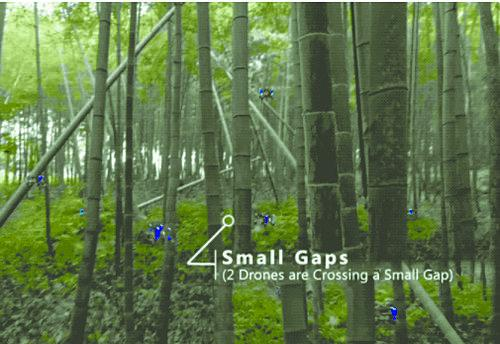Swarm Robots Buzzing into Reality
By YU Haoyuan
Recently, Zhejiang University announced a new aerial robotic technology: a swarm of robots that can operate without a unified central command. The technology relies on the algorithm and it can make each single drone among the swarm of robots flying in different sites. Based on "independent thinking," the robots can freely shuttle through a dense bamboo forest without prior mapping.

The flying robots can freely shuttle through a dense bamboo forest without prior mapping.(PHOTO: ZHEJIANG UNIVERSITY)
According to the team, previous performance by a robot swarm was generally realized through satellite positioning and trajectory coding, controlled by ground computers. In this mode, once the robot group drops its central command, it will act in a "leaderless" manner, not only failing to maintain its formation, but also possibly colliding with obstacles or with each other.
In order to address this problem, the team chose a "bird-flock" navigation algorithm based on trajectory planning to make trajectory plans on time and space, so that multiple drones can pass through a narrow gap without any collision. In addition, these robots can quickly resume their formation after circumventing obstacles. And, they can also cooperate with each other to continuously track specific targets.
Each robot is only the size of a hand palm and lighter than a can of Coke(about 300g). All the robots have a complete set of functions for sensing, positioning, planning and controlling, with high-fidelity wireless communication used to share trajectories with each other. Thus, they can avoid eventual mutual collisions due to little error accumulated over long distances.
These robots could be designed for the purpose of disaster relief, exploration and transportation, because a swarm of such robots can survey confined environments.


